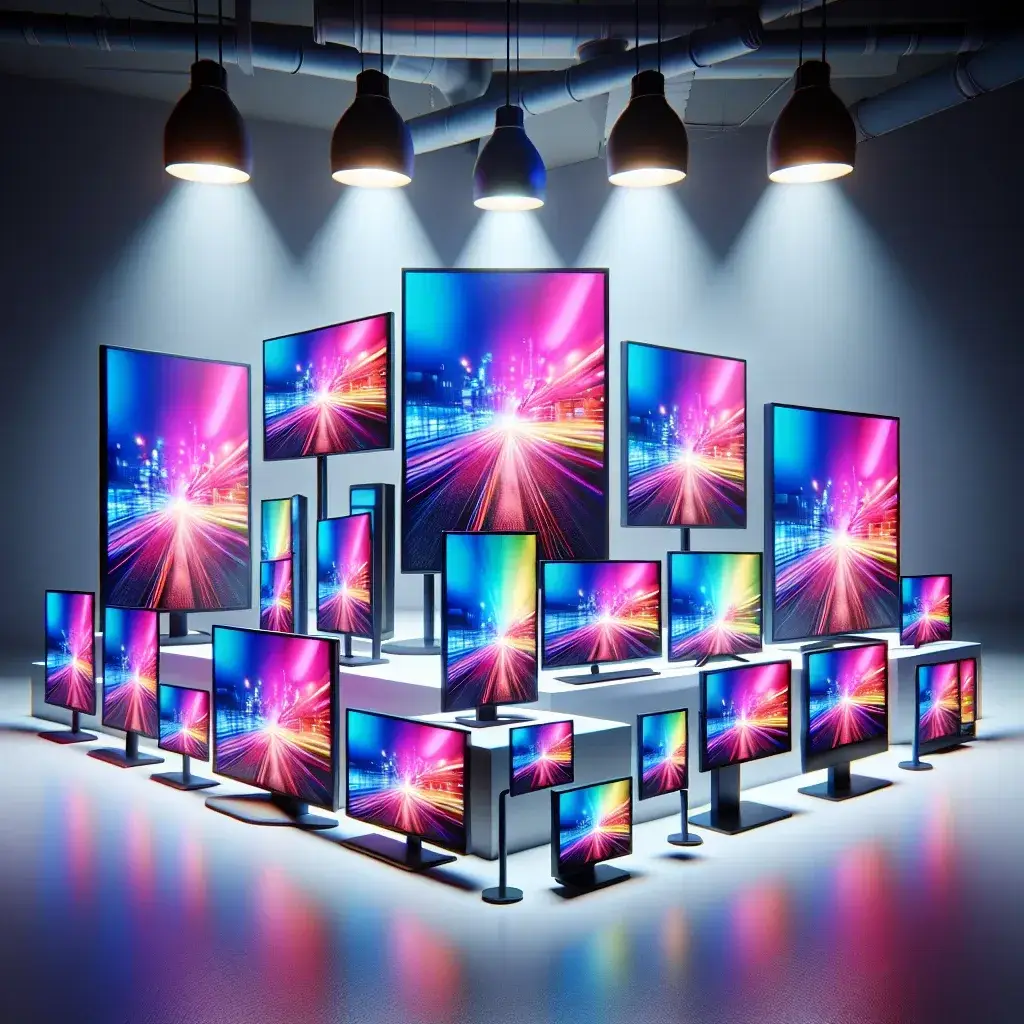Introduction
The world of LED monitors offers a plethora of choices, catering to a diverse range of needs—from professional graphic design to gaming and general use. Understanding the range of sizes available and their respective benefits can help you make an informed decision when purchasing an LED monitor. In this article, we’ll explore the different sizes of LED monitors, highlight their key features, and provide guidance on how to select the right one for your specific requirements.
Standard LED Monitor Sizes
LED monitors come in various sizes, typically measured diagonally in inches. Below is a table summarizing the most common sizes available in the market along with their typical use cases:
| Size (inches) | Resolution | Use Case |
|---|---|---|
| 19-22 | 1366×768 to 1920×1080 | Basic Office Work, Internet Browsing |
| 23-25 | 1920×1080 | General Use, Moderate Gaming |
| 27-32 | 1920×1080 to 2560×1440 | Professional Work, Gaming |
| 34-38 | 3440×1440 to 3840×1600 | Ultra-Wide Monitors, Multitasking, Professional Editing |
| 40+ | 3840×2160 and above | High-End Gaming, Professional Design |
Benefits of Different Sized Monitors
19-22 Inches: Compact and Affordable
The 19-22 inch range is perfect for basic office work and casual internet browsing. These monitors are affordable, making them an excellent choice for budget-conscious consumers or businesses needing multiple setups.
23-25 Inches: Versatile and Popular
Monitors within this size range offer better resolution (typically 1920×1080 Full HD), making them suitable for a wide range of tasks, including moderate gaming and general use. They strike a good balance between price and performance.
27-32 Inches: Detail-Oriented
This size range is ideal for professionals requiring more screen real estate and higher resolutions (up to 2560×1440). These monitors are also popular among gamers who want a more immersive experience.
34-38 Inches: Ultra-Wide Experience
Ultra-wide monitors in the 34-38 inch range are designed for multitasking and professional editing. They offer expansive viewing angles and resolutions up to 3840×1600, providing a broad workspace and immersive experience.
40+ Inches: The Ultimate Viewing Experience
Monitors measuring 40 inches and above are often used for high-end gaming and professional design. These monitors offer the highest resolutions (4K and above) and the most immersive viewing experiences.
Choosing the Right Size for Your Needs
Consider Your Use Case
Your specific needs should dictate the size of the monitor you choose. For example, if you only need a monitor for basic tasks, a smaller, more affordable option may be sufficient. Conversely, if you are a professional designer or gamer, investing in a larger, high-resolution monitor is recommended.
Evaluate Your Workspace
The size of your workspace will also influence your decision. Make sure to measure your desk and consider how much space you have available. Larger monitors require more room and appropriate seating distance for comfortable viewing.
Resolution Matters
A larger screen should ideally offer a higher resolution to maintain sharp image quality. For example, a 27-inch monitor with a resolution of 1920×1080 may not look as crisp as a smaller monitor with the same resolution.
Budget
Lastly, consider your budget. While larger monitors with higher resolutions offer better experiences, they also come at a higher cost. Balance your needs with your budget to find the best fit.
Conclusion
The sizes of LED monitors vary widely, each serving different needs and preferences. Whether you need a compact monitor for basic tasks or a large, high-resolution monitor for professional use, understanding the benefits and applications of each size can help you make an informed decision. Evaluate your specific requirements, workspace, resolution needs, and budget to choose the LED monitor that best suits you.

